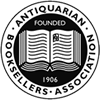
MAPS & VIEWS
PRINTS
BOOKS
back to search results place the mouse over an image to zoom
"The Battles of Alexander the Great" by Charles Le Brun.
Le Brun, Charles; Sheppard, Robert & Smith, Robert. The Battles of Alexander the Great. " Virtue Surmounts all Difficulties"; "Virtue Fit to Govern the World"; "He's Truly Brave that Overcomes Himself";: " Thus Heroes Exalt themselves by Virtue":" True Valour is Always Invincible";" Valour is Priz'd tho Vanquished". London. 'Printed for & sold by Carington Bowles at his Map & Print Warehouse No.69 St Pauls Church Yard London',? No Date but probably c1770sSeries of 6 large copper engravings of the Battles of Alexander the Great; first English edition, by Robert Sheppard & Robert Smith, after Charles Le Brun. Titles in English, Latin & French, versos blank.
An extremely scarce set of the first English publication of these monumental illustrations of Charles Le Brun's Battles of Alexander.The original paintings were commissioned by Louis XIV for Versailles. They alluded to the Grandeur of Louis by comparing him to the Great Alexander. Indeed it is suggested that the portrait of Alexander in plate 4 is in fact of Louis. The painting first completed showing Alexander and the Family of Darius, "He's Truly Brave that Overcomes Himself" so delighted Louis XIV that he at once ennobled Le Brun who was also created Premier Peintre du Roi (First Painter of the King) with a pension of 12,000 livres.
English Titles:
Plate 1; " Virtue Surmounts all Difficulties" Alexander, having pass'd Granicus with unequal Forces, attacks the Persians & Putts their numerous Army to Rout.
C le Brun Pinxit R Sheppard Sculpt. [ Battle of Granicus].
Plate 2: "Virtue Fit to Govern the World" Alexander, after many Victories gain'd by his Valour ,defeats Darius at Arbela, and having by that Battle putt a Period to the Persain Empire,He Conquers the East.
C le Brun Pinxit No engraver mentioned [Battle of Arbela].
Plate 3: "He's Truly Brave that Overcomes Himself" Alexander, having overthrown the Persians, near the city of Issus, enters the Royal Tent of the family of Darius &
there gives a singular Proof of Clemency & Continence.
C le Brun Pinxit. R Sheppard Sculpt. [ The Tent of Darius].
Plate 4: " Thus Heroes Exalt themselves by Virtue" Alexander enters Babylon in Triumph amidst the shouts & Acclaimation of the people.
C le Brun Pinxit No engraver mentioned [Entry in Babylon}
Plate 5:" True Valour is Always Invincible" Porus, being forsaken by his own people, with great Courage sustains the attacks of his Enemies, wounded several by them & slew Taxiles Brother.
After which being grievous bruised & Wounded fell from off his Elophant.
C le Brun Pinxit Robt. Smith Sculpt [Defeat of Porus].
Plate 6:" Valour is Priz'd tho Vanquished" Alexander, admiring the greatness of soul of King Porus whom he had defeated & made Prisoner,Not only pities him , but [ as an honorable mark of his Esteem]
admits him into the Number of his Friends & gives him a kingdom greater than that which he had lost.
C le Brun Pinxit. R Sheppard Sculpt. [Mercy To Porus]
Our set lacks the publishers imprint at lower left, but most likely published by Carrington Bowles; the British Museum have one of the plates with imprint of Carrington Bowles Dark impressions; each image consists of 2 copper plates joined; lower margins trimmed at left to plate mark thus removing publishers details [possibly they were bound at some time]; some light creases and minor chipping to edges not unsurprising in such large plates.
Plate 1: 570 x 1010 mm; trimmed into plate mark at left lower blank margin by 10 mm, just below text; hole with old repair to verso in left blank margin and a few small holes far from image; small hole to image, upper left.
Plate 2: 569 x 960 mm; trimmed into plate mark at left lower blank margin by 10 mm, just shaving text.
Plate 3; 574 x 995 mm; trimmed into plate mark at left lower blank margin by 10 mm, just below text; 4 small holes to left blank margin, far from image.
Plate 4: 590 x 955 mm; trimmed into plate mark at left lower blank margin by 10 mm, just below text; 4 small holes to left blank margin, far from image.
Plate 5: 560 x 995 mm; trimmed into plate mark at left lower blank margin by 5 mm, just below text; 4 small holes to left blank margin, far from image.
Plate 6: 565 x 1000mm; trimmed to platemark at lower margin; small hole ,repaired to verso and 2 tiny holes to left blank margin.
Charles le Brun 1619 – 1690
was a French painter and art theorist. Declared by Louis XIV "the greatest French artist of all time", he was a dominant figure in 17th-century French art and much influenced by his mentor Nicolas Poussin. with whom he travelled to Italy in 1642 , where he would reside for four years. He was Royal painter to Louis 14th of France and he is credited with creating the opulent style of the King.
Four of the paintings were exhibited in the Salon of 1673 before going into the King's collection; now in the Louvre. The paintings are approx 4.5 x 7.8 metres.
In 1660 the Gobelinsworks were established, which at first was a great school for the manufacture, not of tapestries only, but of every class of furniture required in the royal palaces. Lebrun was responsible for designing almost all the important cartoons for the early work of the Gobelin factory, but beyond that, he was responsible for decoration and for statues at Versailles, for a long series of allegorical paintings, and for decoration work at Sceaux, Versailles, and Marly. Commanding the industrial arts through the Gobelins—of which he was director—and the whole artistic world through the Academy—in which he successively held every post—Le Brun imprinted his own character on all that was produced in France during his lifetime. He was the originator of Louis XIV Style and gave a direction to the national tendencies which endured centuries after his death. As director of the Gobbelinsworks, the images were also made up as tapestries.
Robert Sheppard [Shepherd], (active: 1712–1740),
engraver, remains a relatively obscure figure in the history of the eighteenth-century print world. It is said that he studied engraving under David Loggan (1634–1692), but if this is the case he must have worked with that engraver in his waning years, which were plagued by poverty and increasing blindness. In 1712 Sheppard's name appears on the list of members of the Great Queen Street Academy, founded by Sir Godfrey Kneller in the preceding year. Mixing there with more renowned engravers such as George Vertue, Gerard Vandergucht, and Nicolas Dorigny, he had the opportunity to hone his drawing skills through the study of antique casts and life models. Like those engravers, Sheppard (sometimes known as Shepherd) was also heavily involved in reproducing portraits of sovereigns and statesmen for the Knapton Brothers' enormously successful folio publication of Paul de Thoyras-Rapin's History of England (1732–7). With their characteristic sculptural ornamentation surrounding competently engraved portraits, these relatively standardized line engravings are usually signed 'R. Sheppard Sculpt'. A few other portraits by Sheppard are known, including one of Edward Kidder, which formed the frontispiece to his Receipts of 1740. He also engraved three out of a set of six plates after Gérard Audran's Battles of Alexander; [Lucy Peltz, Oxford Dictionary of National Biography, Oxford University Press, 2004]
His most renowned work are these prints published by Carington Bowles. According to Thieme Becker the set is a copy of the plates engraved by Gerard Audran c.1675/78, however the French series only includes four or five plates, not six; moreover, the British plates are in the same direction as their French counterparts.
Carington Bowles, 1724-93
Son of John Bowles to whom he was apprenticed in 1741, and with whom he was in partnership as John Bowles & Son, at the Black Horse, Cornhill, London, from 1752 or 1753. He later took over the business of his uncle, Thomas Bowles II in St Paul's Churchyard. It has been assumed that Carington moved to St Paul's Churchyard in 1767 when Thomas II died, but the date 1766 appears with Carington's name as publisher at St Paul's Churchyard on a portrait of Lord Camden (Faber Junior, Chaloner Smith, 52.II). When Carington died the business passed to his son (Henry) Carington Bowles.
Catholic Encyclopedia (1913), Volume 9:Charles Lebrun by George Charles Williamson. 590 by 1010mm (23¼ by 39¾ inches). largest. ref: 2672 €12000
Company: Bryan, Mary Louise.
Address: Ag. Andrianoy 92 , 21 100 Nafplio, Greece.
Vat No: EL 119092581







